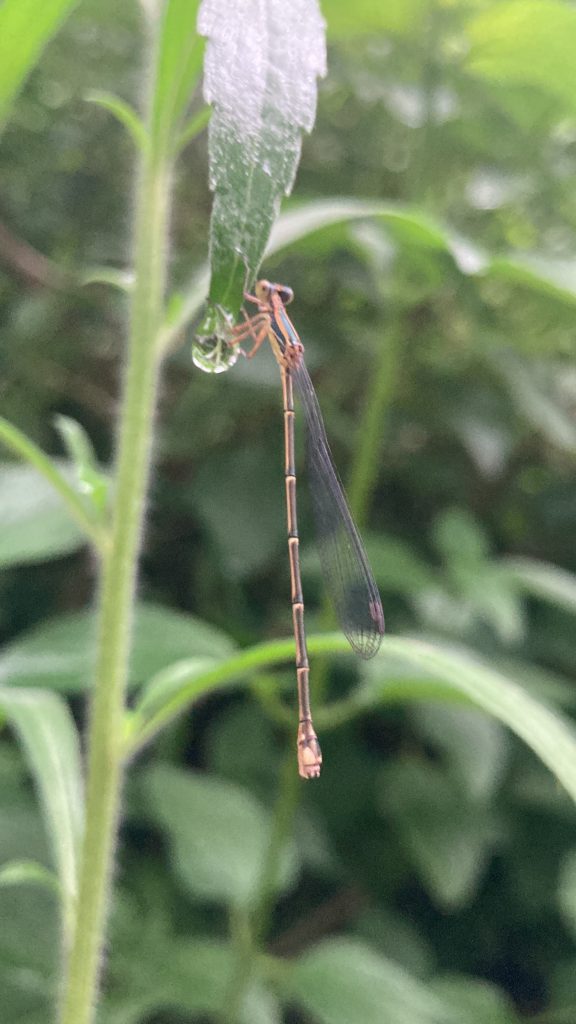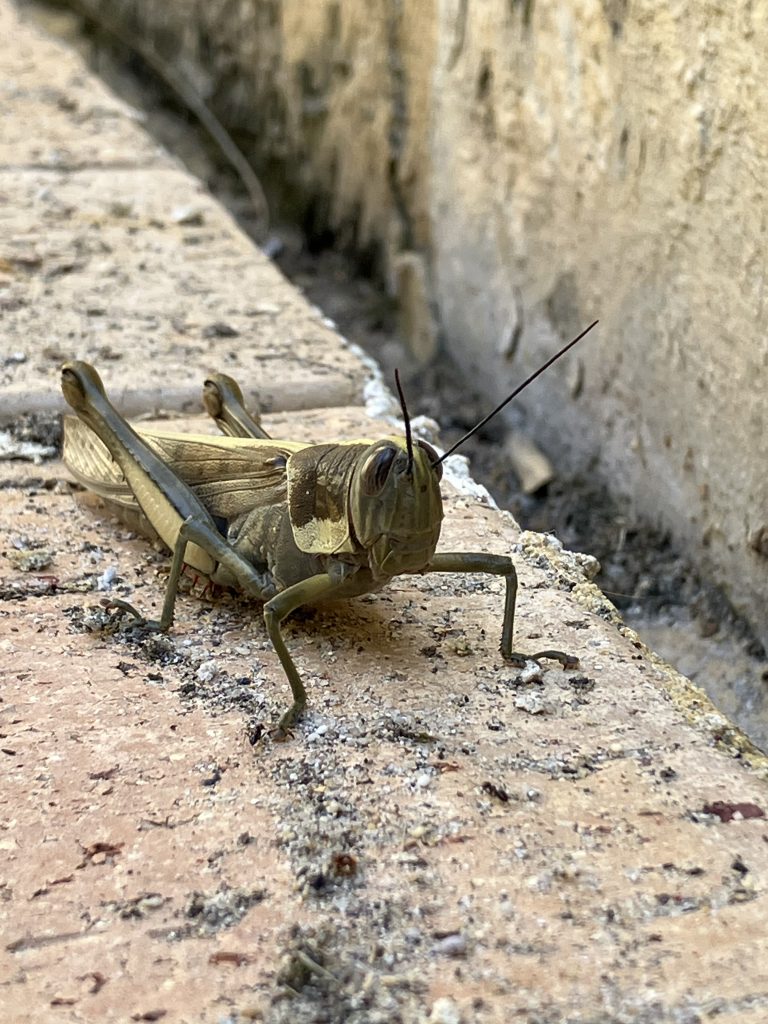Main Club, 3 October 2025
Our speaker was Jasper Dean. Jasper is the current secretary of the Perth Insect Study Society, and is studying an unusual combination at UWA: Conservation Biology and English. During his gap year, he worked at Kings Park as an Education Assistant. He enjoys making models of insects from recycled materials, and the Bug Zoo in Canada is one of his favourite places in the world. After showing us his insect tattoos, he delivered his talk in a light-hearted and entertaining way, and his enthusiasm shone through.
In Australia, there are 3000 species of orthopterans, or straight-winged insects. They make a loud noise by rubbing body parts together (stridulation). They are divided into the katydids and crickets (Ensifera) and the grasshoppers and locusts (Caelifera).
The Ensifera have long, hair-like antennae, make their noise by rubbing their wings against their back legs, and have their ears on their forelegs. In contrast, the Caelifera have short antennae, make their noise by rubbing their back legs together, and have their ears on the side of the first abdominal segment.
Katydids are also called bush crickets, especially in Australia, although they are not the same as true crickets. (Hence the need for scientific nomenclature, and Jasper explained some of the interesting etymology of those Latin names). Katydids are flattened laterally. Jasper showed us some that look like leaves, and even some with holes and blemishes to make them resemble real leaves. One in 500 has a mutation that makes them bright pink! Katydids mostly eat plant material, but some prey on insects. Some toss their faeces away to deter predators (Look out!). Lost your thermometer? You can use the chirping rate of katydids to determine the temperature.
Another group of insects is the Odonata. This order is divided into two major groups – the dragonflies, which rest with their wings outstretched, and the damselflies, with wings folded along the body when at rest. There are other differences as well, such as where they lay their eggs. Their immature stage is called a naiad, which means an aquatic nymph stage. They live in water and are very well camouflaged.




There have been attempts to build artificial dragonflies that can fly like drones, but by flapping their wings. And in the movie Dune, there are similar flying machines called Ornithopters.
Jasper finished this interesting talk by referring to experiments that tested whether insects could retain memory between stages of metamorphosis. This has implications for knowledge about the development of the insect brain. An interesting outcome of the experiments was to dispel the myth that all parts of the body and brain are dissolved in every stage of metamorphosis, and prove that adult butterflies retain memories made during caterpillar development.
*All images by Jasper Dean
Mike Gregson

